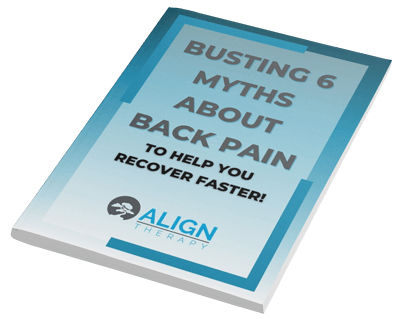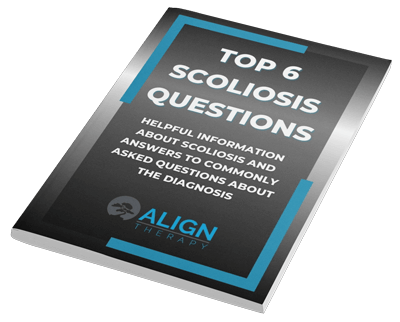
Scoliosis is very common in our world. Up to 3% of the population has scoliosis when they are children, and adult onset scoliosis is much more common than we realize! (can be up to 25% of the aging population)
Chances are you know someone who has scoliosis…even if they might not.
So, the good news, you are not alone in your diagnosis of scoliosis. You have plenty of company in this, but it still seems like there is confusion on what to do about it. Everyone might have a different suggestion, but many times, even providers don’t know what to do.
I see patients all the time in my clinic who are confused about their diagnosis, have been told to just “wait until it is bad enough”, or have been passed from “specialist” to “specialist”. Isn’t there a better way to treat scoliosis? Yes there is!
You need to become your own advocate for your spine. How do you do that?
Here I have written a few things you can do to take control of the care of your spine. When you take control, you can make the decision that makes the most sense for YOU!
1) Speak up and ask questions!
This is probably the biggest and best suggestion I can give you. The problem is, most of the time you don’t know what questions to ask. Here are a few suggestions
- Is there anything else I can do?
- Are there any exercises that would be good to start or avoid?
- When is surgery the option?
- What are the risks of surgery?
- How many surgeries like this have you done?
And there are many more you can ask. The biggest thing is to ask the questions until you are satisfied with the answers. This is your spine, don’t settle for vague answers.
Also, don’t expect to be told everything you can do. This may be because they don’t think other things are effective, but maybe they don’t know about them as well.
For example, many of my adult patients with scoliosis are told they should just wait until the pain is bad enough, and then surgically they will “fix” it. Not only is this advice not correct, but it can delay treatment that can help stop progression of the curve and reduce pain and dysfunction.
Sometimes surgeons and other providers feel like there is no hope for a degenerative scoliosis curve. Sure, there are some times where other things are not indicated (such as when progression is happening quickly or when there are fractures involved), but most of the time other things can be done.
In our medical system, we are used to being guided by our medical providers through the process. While some may do this amazingly well, most are not great at it. Don’t expect to receive all the information you need without asking questions!
2) Do Your Own Research
Now, this may seem daunting because you have not researched this type of thing before, but break out your computer and search what treatments are out there and try to answer your own questions from #1 above.
There has been no other time in history where we have so much information at our fingertips. All you have to do is pull up Google and search. Become the expert on YOUR diagnosis.
A word of caution! There are some crazy things out there on the internet. I have seen some treatments for scoliosis that are totally crazy and ineffective. One way to combat this is to go to reputable websites. If it looks shady, it probably is. Also, if you get the same recommendation from multiple websites, you might be on the right track.
If you know how to use Pubmed, then search on there for current research. If not, no worries.
The main thing is to educate yourself on what is available. Get an idea of what might be a good fit and dig deeper to see if it fits for you. Don’t make this decision quickly though. There are a lot of things out there and it will take some time.
When you decide that something is right for you, ask them to provide the research that backs what they do. If they can’t do that, I would be cautious.
If someone contacts me about scoliosis treatment, there are MANY studies I can give them that support what I do. Most of those are actually already on our website for all to see.
3) Get A Second Opinion
This is more specifically when surgery is suggested, but it also goes for when a brace or other significant treatments are suggested. Getting a second opinion is never a bad thing, and helps to educate you on what else is out there.
Remember the questions you had before and make sure you get answers. Don’t be afraid to ask direct questions of the first and second opinion so you can make a better decision.
Most of the surgeons I trust the most have their patients get second opinions before surgery. They do this to make sure the patient has weighed their options and to make sure they are ready for the procedure.
If a surgeon steers you away from having a second opinion, I would be VERY cautious. Most welcome you getting a second opinion.
If a brace is recommended for you, I would definitely get a second opinion. There are not very many orthotists who do bracing for adults, and there is a reason for this. The research really isn’t in support of adult bracing, and it can weaken the muscles. With that said, I am always open to new ways to brace, but I am very diligent in my research of them.
Finally, if someone recommends a treatment and claims to be able to “fix” your scoliosis, I probably wouldn’t get a second opinion…I would go somewhere else. Anyone claiming to be able to “fix” scoliosis should be a red flag! It just hasn’t been shown to be possible.
4) Find A Specialist
Many medical providers will say that they treat scoliosis…but do they? Not all spine surgeons can do scoliosis surgery. Not all Physical Therapists have worked with multiple scoliosis patients. And not all family practice doctors know where to send you when it develops.
This isn’t to say they can’t be helpful, but if you are looking for specialized treatment for your scoliosis, go to a specialist!
In Physical Therapy, this means go to someone who has been trained in a specific way of treating scoliosis, and not someone who took a weekend course on the spine. Physical Therapists are not all trained in treating scoliosis. On the contrary, most don’t know how to treat it effectively. (and this is coming from a PT)
The research shows that general physical therapy, without training in a specific school of scoliosis treatment, has not effect on progression or structure of the curve.
Just like if I needed a knee replacement, I would go to the guy who has done hundreds of them, I would go to someone who sees scoliosis all the time. Unfortunately, this is hard to find in some places. Do your best and look for someone who is trained.
For orthopedic surgeons, make sure it is someone who has done many surgeries on scoliosis and not someone who “dabbles” in it. You get one real shot at surgery!
I know most chiropractors say they specialize in scoliosis, but the research is definitely not in support of this. Recent articles have shown that spinal manipulation has no effect on the curve. (Here you can find a YouTube Video where I talk about that)
Whoever you go to, make sure they are a specialist! Your spine deserves someone who knows what they are doing!
So, there are a few things you can do to advocate for yourself with the diagnosis of scoliosis. The more time you spend advocating for your curve, the better your results will be.
Take the time to educate yourself, ask questions, and connect with others. As you do that, you will get the results you want with this diagnosis. It will take some effort and time, but it is definitely worth it.
If you would like more information on how we treat scoliosis at Align Therapy, please don’t hesitate to contact us.
You can even download a free report about scoliosis and what can be done. You can find it HERE.
Thanks for reading!
Dave



